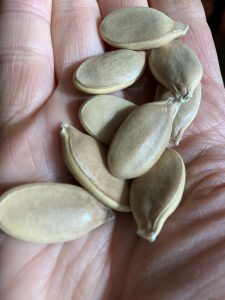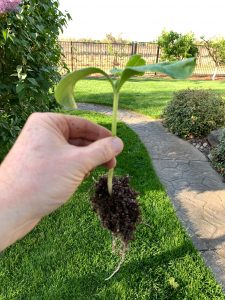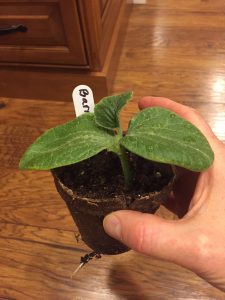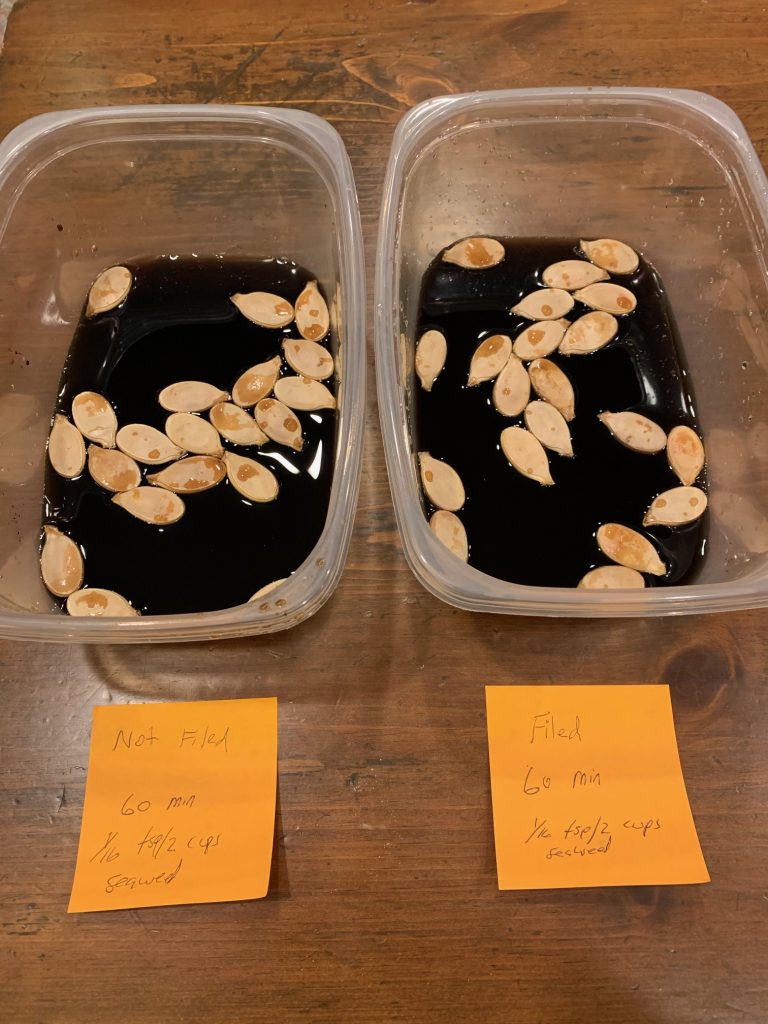
Germinating giant pumpkin seeds is not a difficult task, and high success rates can be achieved as long as basic criteria are met. It is important to control temperature, moisture levels, and timing. However, there are some subtle differences between the various techniques used to germinate seeds. To find their ideal method, one must experiment and practice.
I only germinate seeds once a year, so I tend to forget my skills easily. That’s why practice is important. I make sure to document each time I try to germinate seeds to avoid missing anything. It’s a good idea to start with inexpensive practice seeds, such as giant pumpkin seeds, or regular pumpkin seeds if you can’t find giant ones.
For information about acquiring seeds, see my blog, Finding Giant Pumpkin Seeds. Below are my steps and specifics to achieve successful seed germination.
Giant Pumpkin Seeds: Preparation
There is a common suggestion that filing the edges of pumpkin seeds with a fingernail file can help in their germination process. The rationale behind this is to remove a growth layer from the edge, which allows moisture to enter the seed and promote germination. However, it is important to avoid filing the pointed end, as this is where the roots will emerge from.
Although I have conducted experiments to compare the germination rates of filed and un-filed seeds, I have not observed any noticeable difference. Despite this, I continue to file the edges of my seeds every year and test the effectiveness of filing by comparing germination rates between filed and not-filed seeds. So far, I have not found any difference.
In addition to filing, it is recommended to soak your seeds in warm water or a mild seaweed solution. The recommended soaking times range between 30 minutes and 24 hours. Personally, I prefer to soak my seeds for one hour in a mild seaweed solution.
When should I plant my seeds? This is a common question. The best time to plant pumpkin seeds depends on your local climate and growing season. In general, giant pumpkins require a long growing season of about 100 to 120 days.
If you’re in a region with a shorter growing season or cooler temperatures, you may want to start your pumpkin seeds indoors several weeks before the last frost date in your area. This allows the seedlings to get a head start and be ready to transplant outdoors once the weather warms up.
On the other hand, if you’re in a warmer climate with a longer growing season, you can plant the seeds directly outdoors after the last frost date.
To determine the optimal planting time for your pumpkin seeds, consider factors such as your local climate, frost dates, and the specific requirements of the pumpkin variety you’re growing. Additionally, you can consult gardening resources or local agricultural extension offices for specific recommendations tailored to your area.
Pumpkin Seed Germination

I put a seed germination heat mat in a large cooler to germinate my seeds and set the temperature to 86 degrees Fahrenheit. Next, I lay a cloth towel on top of the heat mat in preparation for the bagged seeds. I pack the seeds in bags by taking one seed, folding a moist paper towel around it, and putting it in a plastic bag. Then, I place the bags of seeds on the paper towel, overlapping each other. After approximately 24 hours, I open a few of the bags and carefully unwrap the paper towels to check for roots.
A portion of the seeds will already have roots developing. I take all seeds with roots and plant them in separate peat pots, carefully keeping track of the seeds by using garden labels. I then check daily and add more seeds to the pots as needed. Most seeds germinate in approximately two days. Some have taken as long as five days.

I put the small pots in a clear, unheated tub and keep them moist in the house near a window until I see leaves coming up. Once I see a seed or some green poking through the surface I will get them under my fluorescent grow lights. At this early stage, you will notice that your pumpkin plants appear to be growing slowly.
They may need some help shedding the seed coat. This needs to be done very carefully to avoid damaging the plants. In order to do this, I carefully spread the seeds apart with my fingers. You will then see two leaf-like things folded together. The first two leaves are not actually leaves but cotelydons that were inside the seed. The third leaf is your first true leaf and once you see this you know you are off to the races.
These are the basics of germination. Most growers follow similar methods. Many will not use the plastic bag method and will plant the seed directly in the soil after soaking. It is up to you how you want to start your seeds and how you want to practice. By continued practice and documentation you will find your path! For more information about giant pumpkin seed germination, see discussion threads on BigPumpkins.com or my book Backyard Big: Growing Atlantic Giant Pumpkins in Your Backyard. Another resource is my post on germinating pumpkin seeds in a grow tent.

